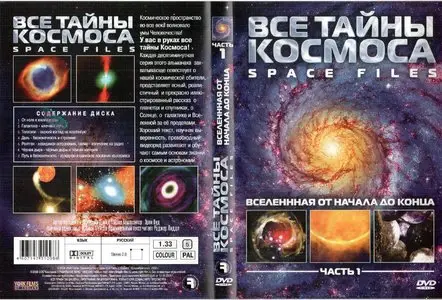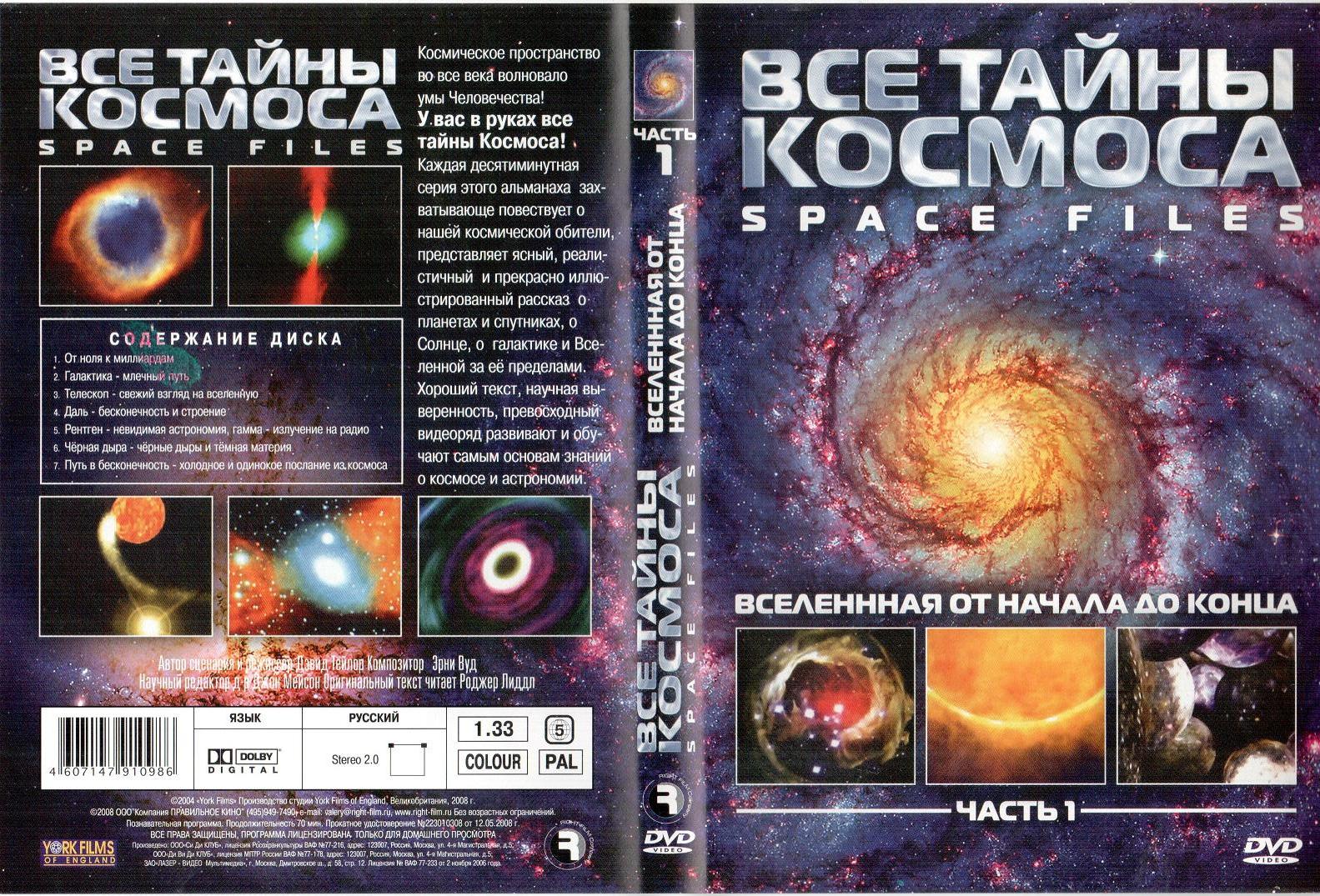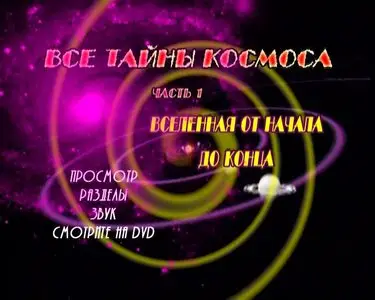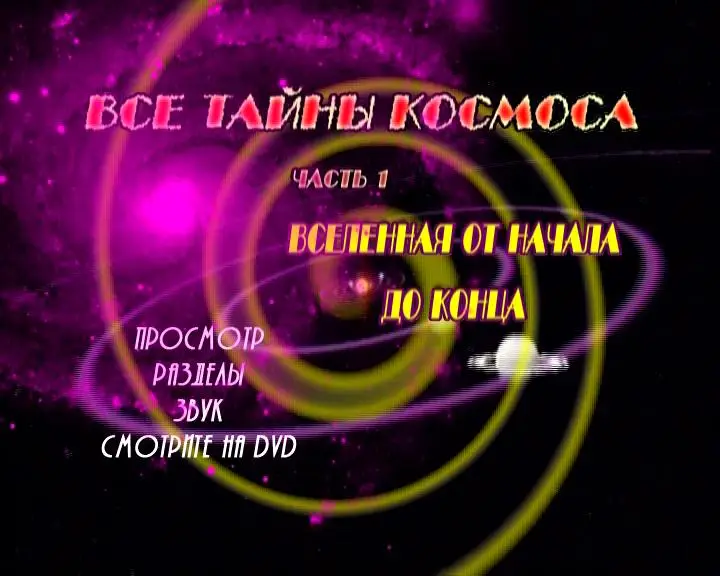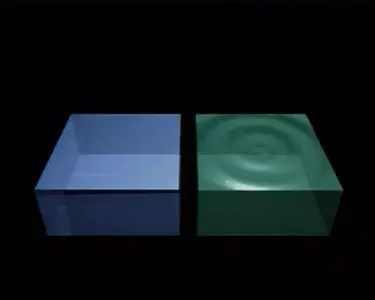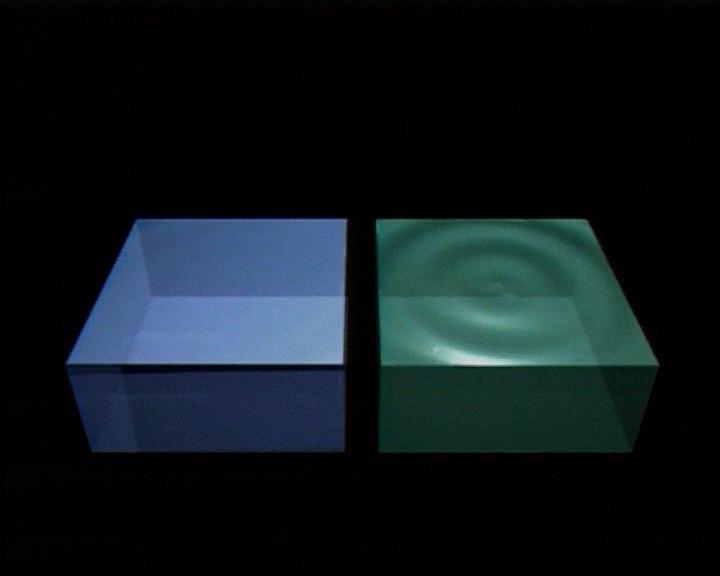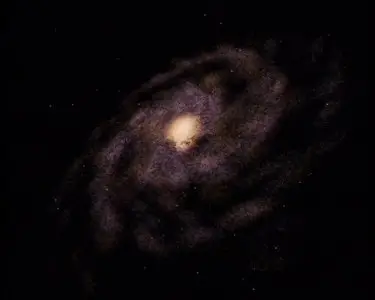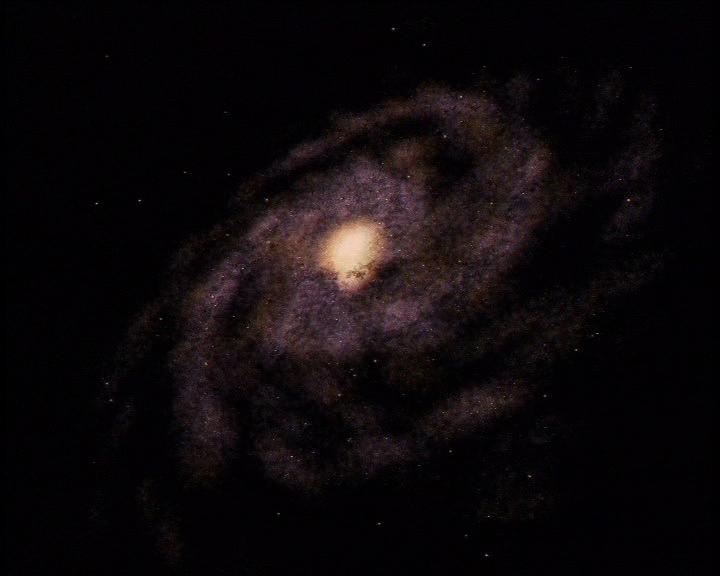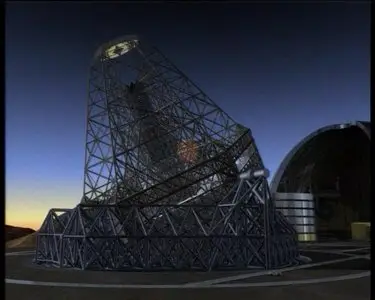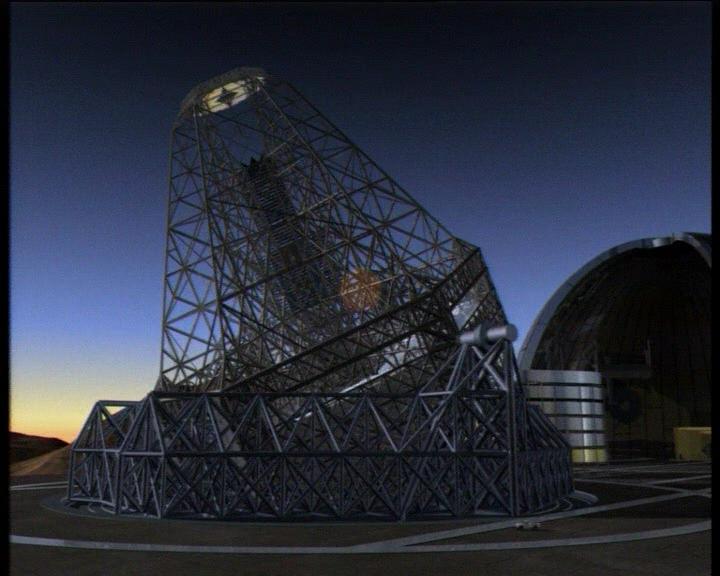Space Files (The Universe Unveiled). Part 1 - Cosmos / Все тайны космоса (Вселенная от начала до конца). Часть 1 - Вселенная от начала до конца (2004)
DVD Video, R5 | 1hr 08mn | PAL 4:3 | 720x576 | 3.72 Gb
Russian \ English: Dolby AC3, 2 ch
Subtitle: None
Genre: Documentary
DVD Video, R5 | 1hr 08mn | PAL 4:3 | 720x576 | 3.72 Gb
Russian \ English: Dolby AC3, 2 ch
Subtitle: None
Genre: Documentary
SPACEFILES is a visual compendium of space and astronomy - 26 ten-minute episodes presenting, in a uniquely flexible format, the Solar System, our Galaxy, and the Universe beyond - each programme or “file” offering a crisp, intelligent, picture-driven story.
1. Zero To Zillions
Birth & Expansion of the Universe
The theory of the Big Bang – how the Universe exploded from an infinitesimal speck to create matter, radiation, time and space. Within the first trillion-trillion-trillionth of a second, the cosmos grew a hundred million times to less than the size of an atom. Then, in another instant, the Universe was the size of a galaxy. Now, 14-billion years later and strung along vast filaments, the Universe has some 50-billion galaxies that continue to expand – and where stars are born, live and die.
2. Galaxy
The Milky Way
Our galaxy, the Milky Way, comprises more than 200-billion stars. They are a spiral disc 100-thousand light years wide and 20-thousand thick. Our nearest stellar neighbour is Alpha Centauri, 4.25 light years away. The Sun, our local star, is two thirds of the way from the galactic centre. After ten-billion years of life, the Sun will bloat into red giant and die as a white dwarf. More massive stars have shorter lives and end in supernovae. The most massive collapse to be black holes.
3. Telescope
Fresh Eyes on the Universe
For more than a decade, free from the distortions of Earth’s atmosphere, the Hubble Space Telescope has delivered breathtaking images of the cosmos with remarkable clarity. Now, ground-based telescopes are fighting back. They are combining the sight of several instruments and correcting atmospheric shimmer. The Very Large Telescope in Chile is already out-doing Hubble. When OWL, the Overwhelmingly Large Telescope comes on stream, it will image planets around other stars.
4. Far Out
Cosmic Measurement & Structure
The measurement and scale of the Universe. How far is a star or a galaxy? Distances are so vast they are described in light years – the distance light travels in a year. Nearby stars are measured by trigonometry – the technique of parallax. Farther out, astronomers use so-called “standard candles”. The pulsing and luminosity of Cepheid Variable stars works up to 90-million light years. Then, Type 1A supernovae are the candle. Beyond that the “redshift” of galaxies reveals their distances.
5. X-Ray
Invisible Astronomy – Gamma Ray to Radio
Invisible astronomy. Much of the cosmos cannot be seen through optical telescopes. But it can be detected in wavelengths of the electro-magnetic spectrum ranging from gamma-rays, through x-rays and ultra-violet to infra-red and radio. They reveal cauldrons of starbirth, exploding stars, neutron stars and black holes. Most exciting are gamma ray bursters - cosmic flashes as bright as a million trillion Suns. On average, a Gamma Ray Buster occurs somewhere in the sky every day.
6. Black Hole
Black Holes & Dark Matter
The vanishing acts in the cosmos – black holes. They occur when a massive star dies. As its outer layers cascade into space, the core collapses to beyond the visible. It becomes a voracious gravitational trap from which nothing, not even light, escapes. Black holes can be detected by bright surrounding discs – material swirling to the event horizon and oblivion. But at the brink, some material hits a shockwave and shoots at right angles from the disc blasting out vast jets and plumes.
7. Yonder To Infinity
Cold & Lonely Prospect for the Universe
How will the Universe end? Rather than slowing down, the expansion of the cosmos seems to be speeding up. The 50-billion galaxies thought to comprise the Universe are moving farther and farther apart. As energy runs out, the ultimate prospect is cold, dark and lonely. Intriguingly, other universes may exist. And, within our own, we have yet to find tangible dark matter - believed to comprise 95 per cent of the Universe. Astronomy reveals more and more - but we still live in a mystery.
Жанр: Документальный
Год выпуска: 2001
Выпущено: Великобритания, BBC
О фильме: Космическое пространство во все века волновало умы Человечества! У вас в руках все тайны Космоса!
Каждая десятиминутная серия этого альманаха захватывающе повествует о нашей космической обители, представляет ясный, реалистичный и прекрасно иллюстрированный рассказ о планетах и спутниках, о Солнце, о галактике и Вселенной за ее пределами. Хороший текст, научная выверенность, превосходный видеоряд развивают и обучают самым основам знаний о космосе и астрономии.
Серии:
1. От ноля к миллиардам
2. Галактика - млечный путь
3. Телескоп - свежий взгляд на вселенную
4. Даль - бесконечность и строение
5. Рентген - невидимая астрономия, гамма - излучение на радио
6. Черная дыра - черные дыры и темная материя
7. Путь в бесконечность - холодное и одинокое послание из космоса
Thanks to original uploader


